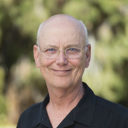Recent UAP Hearings Provide Much Ado about Nothing New
The recent hearings by the United States House Oversight Subcommittee on National Security, the Border, and Foreign Affairs revealed nothing new on whether the US has been visited by ET.1 Though there were other witnesses at the hearing, former Air Force Major David Grusch provided the “bombshell” testimony and received most of the media attention. Grusch worked for the National Reconnaissance Office (NRO), the Department of Defense’s intelligence agency responsible for developing and deploying the country’s most sophisticated reconnaissance satellites. In 2019, he participated in the newly organized task force responsible for receiving and analyzing Unidentified Anomalous Phenomena (UAP), formerly called Unidentified Aerial or Aerospace Phenomena.2
At the hearings, Grusch made two outstanding claims, and two lesser, supporting claims. First, he claimed that the US military has been in possession of crashed UAPs for decades and has been trying to reverse engineer them for ostensibly military purposes. Second, he claimed that the US also recovered nonhuman remains of extraterrestrial “biologics,” presumably extraterrestrial life. Neither of these claims are new or proven, as Hugh Ross, Kenneth Samples, and I document in our book, Lights in the Sky & Little Green Men.
Third, he said that because of his previous public comments in June 2023 to NewsNation3 about these phenomena, he had faced “retaliation.” And fourth, he claimed that he knew of multiple colleagues who were injured by UAP activity.
However, Grusch’s testimony is fraught with problems. When pressed, he declined to support his claims with any evidence. For the first two claims, he only said that when he was employed to be part of the UAP task force, he became aware of the program of captured UAPs and alien biologics, but was “denied access” to the actual program. So he only heard from someone that such a program existed but he never actually saw or participated in it.
When pressed on the two subordinate claims, he offered no evidence of who may have retaliated against him or who the people were that he knew were injured by UAP activity. When pressed further, he told the House members that he didn’t want to provide supporting evidence because he would have to reveal classified information.
So, for the first two claims, he only heard of such a program. Unless he actually witnessed the program or its activities, his testimony is merely hearsay. The last two supporting claims are also problematic, though for different reasons. The Department of Defense Office of the Inspector General has guidelines for whistleblower protections for those who report illegal or improper government activity. It doesn’t appear that Grusch followed those procedures, which would have protected him against retaliation.4 Instead, he went public with his unsubstantiated claims in the media. Second, and most importantly, he contradicted himself at the hearings by arguing that he didn’t want to reveal classified information to support his testimony. Yet, publicly discussing a so-called UAP retrieval program that also housed alien “biologics” would have been, if true, highly classified, which he revealed publicly.
Before Grusch’s testimony, Sean M. Kirkpatrick, the first director of the Pentagon’s All-domain Anomaly Resolution Office (AARO), testified—in classified and unclassified settings—to the US Senate Committee on Armed Services. The AARO is the successor to the earlier UAP task force. In his public testimony on April 19, 2023, he declared that “AARO has found no credible evidence thus far of extraterrestrial activity, off-world technology or objects that defy the known laws of physics.”5 Congress, or some members of it, would have been in an uproar if Kirkpatrick flatly contradicted himself in a classified setting with his unclassified briefing. The standard way to discuss such controversial matters would have been for Kirkpatrick to avoid publicly saying what he said, but instead to “neither confirm nor deny” such allegations in public, if indeed such a program existed.
In fact, a substantial bipartisan group of senators is currently proposing legislation requiring that the government or private parties reveal what they may know of such programs.6 In other words, those responsible for oversight of the military and all government programs remain frustrated in the progress of understanding UAPs, mainly because the formation of the AARO and the previous task force has led to more and more UAP sightings.
Despite the media hype, there remains no credible evidence of US involvement with capturing and reverse engineering UAPs or hiding alien bodies.
Endnotes
- For the general contours of the hearing, see Jeffrey Kluger, “What We Know—and Don’t Know—about UFOs after the Congressional Hearing,” Time, July 27, 2023. See also Zamone Perez, “UFO Whistleblower Claims He’s under Threat for Revealing Secret Ops,” Military Times, July 26, 2023.
- For background discussion on the current situation, see my previous blog posts from 2019 and 2021. Mark Clark, “Responding to UFOs in the News,” Voices (blog), Reasons to Believe, June 25, 2019; “New US Government UFO Report: A Christian Perspective,” Voices (blog), Reasons to Believe, August 12, 2021.
- Brian Entin, “Military Whistleblower Claims US Has UFO Retrieval Program,” NewsNation, June 6, 2023.
- Department of Defense Office of Inspector General, “About Whistleblower Protection,” accessed July 27, 2023.
- Brett Tingley, “Pentagon Has ‘No Credible Evidence’ of Aliens or UFOs That Defy Physics,” Space.com, April 19, 2023. 6. Alexander Bolton, “Senators to Offer Amendment to Require Government to Make UFO Records Public,” The Hill, July 14, 2023.






